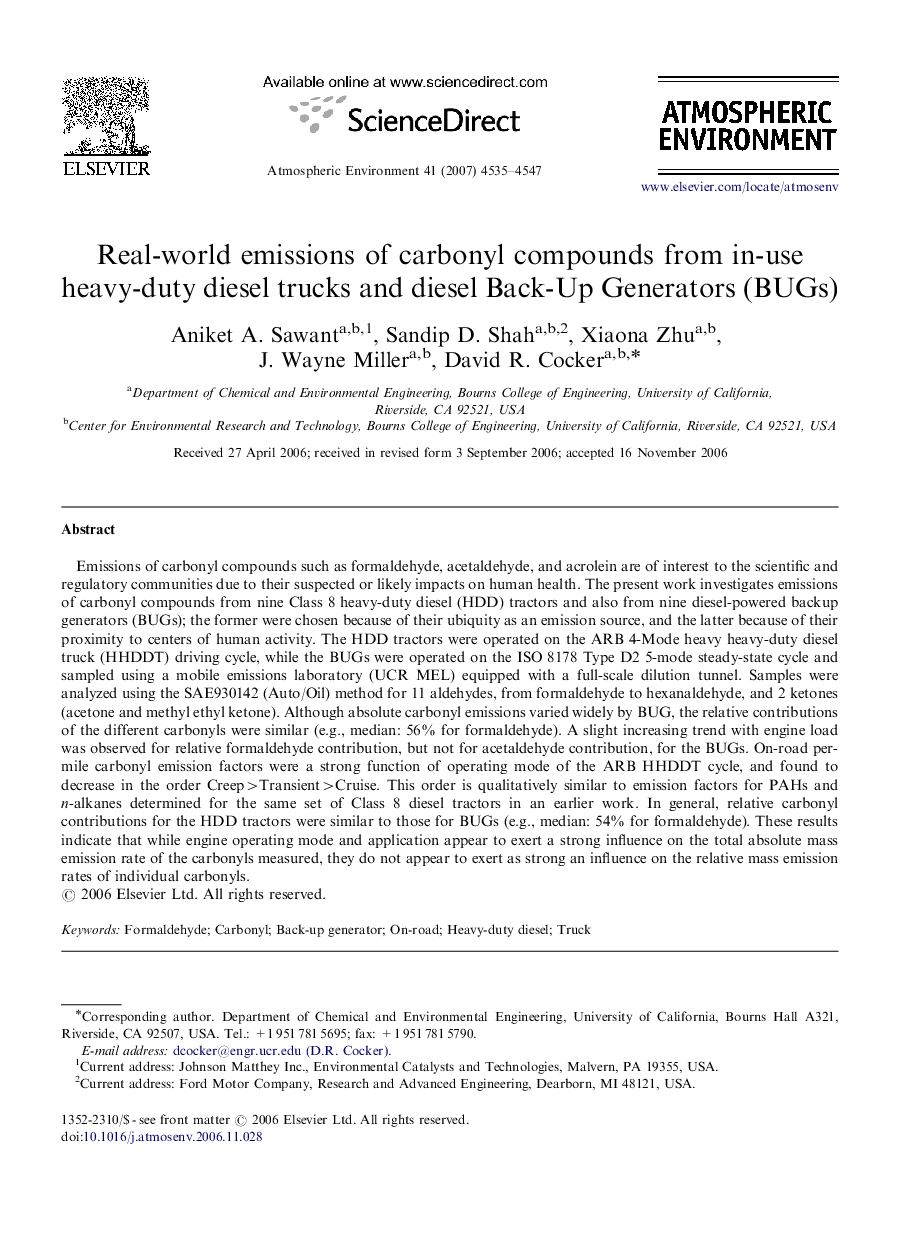| Article ID | Journal | Published Year | Pages | File Type |
|---|---|---|---|---|
| 4443285 | Atmospheric Environment | 2007 | 13 Pages |
Emissions of carbonyl compounds such as formaldehyde, acetaldehyde, and acrolein are of interest to the scientific and regulatory communities due to their suspected or likely impacts on human health. The present work investigates emissions of carbonyl compounds from nine Class 8 heavy-duty diesel (HDD) tractors and also from nine diesel-powered backup generators (BUGs); the former were chosen because of their ubiquity as an emission source, and the latter because of their proximity to centers of human activity. The HDD tractors were operated on the ARB 4-Mode heavy heavy-duty diesel truck (HHDDT) driving cycle, while the BUGs were operated on the ISO 8178 Type D2 5-mode steady-state cycle and sampled using a mobile emissions laboratory (UCR MEL) equipped with a full-scale dilution tunnel. Samples were analyzed using the SAE930142 (Auto/Oil) method for 11 aldehydes, from formaldehyde to hexanaldehyde, and 2 ketones (acetone and methyl ethyl ketone). Although absolute carbonyl emissions varied widely by BUG, the relative contributions of the different carbonyls were similar (e.g., median: 56% for formaldehyde). A slight increasing trend with engine load was observed for relative formaldehyde contribution, but not for acetaldehyde contribution, for the BUGs. On-road per-mile carbonyl emission factors were a strong function of operating mode of the ARB HHDDT cycle, and found to decrease in the order Creep>Transient>Cruise. This order is qualitatively similar to emission factors for PAHs and n-alkanes determined for the same set of Class 8 diesel tractors in an earlier work. In general, relative carbonyl contributions for the HDD tractors were similar to those for BUGs (e.g., median: 54% for formaldehyde). These results indicate that while engine operating mode and application appear to exert a strong influence on the total absolute mass emission rate of the carbonyls measured, they do not appear to exert as strong an influence on the relative mass emission rates of individual carbonyls.
